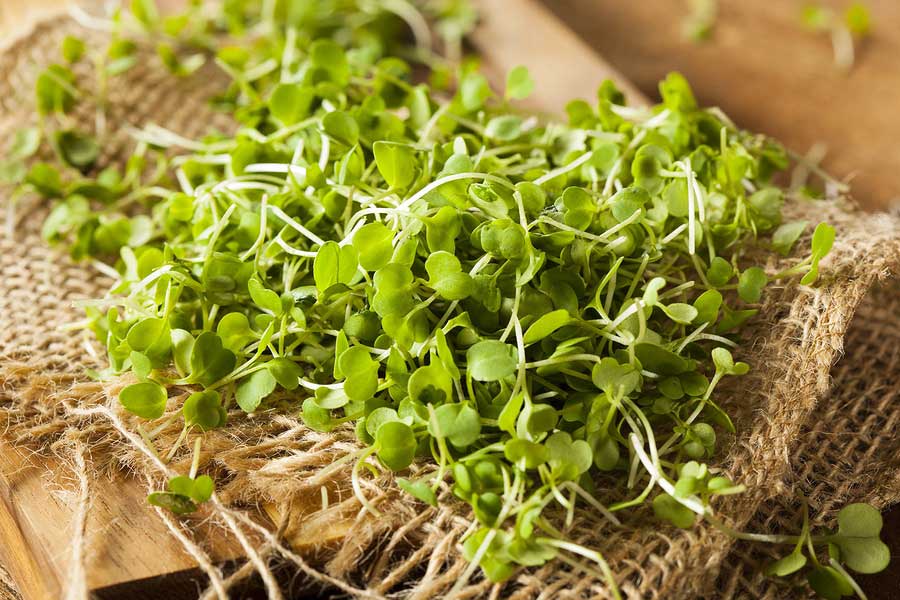In the winter, fresh greens can be hard to come by. Here we take a look at sprouts and microgreens, two delicious and healthy foods you can grow at home. Having fresh food at home during the winter months can have significant benefits including:
- Better nutrition.
- More flavor in your meals.
- Cost savings.
Sprouts
There are many kinds of sprouts available, ranging from alfalfa to radish, clover, broccoli, lentil and sunflower. You can add sprouts to salads, soups and sandwiches. They contain more essential fatty acids, fiber, protein and enzymes as sprouts than when full-grown! Sprouts also have an alkalizing effect on the body, which helps in your body’s normal homeostasis and reduces risks of diseases like cancer.
You can grow spouts with just a quart mason jar and sprouting lid, best for small seeds. You can purchase sprouting kits that come with a jar and different lids for your seeds. These materials can all be washed and reused.
First, cover the bottom of the jar with sprout seeds and then fill the jar halfway with water. Put the lid on and let it soak overnight. Drain the jar the next morning, getting out as much as water as possible and rinse the seeds out a couple of times. You can consume the sprouts right away.
For alfalfa sprouts, repeat the same process above of rinsing and draining until you see the first set of leaves, called the cotyledons. This could range from a few days to a week, depending on the size of the seed. Spin in a salad spinner to dry them after a final rinse and then refrigerate them in a glass jar. The alfalfa sprouts will continue to grow a bit even when it is cold outside. This is a good method to quickly grow alfalfa, clover, lentils and radish. Sprouts are easy to grow and can offer you a continuous supply in the kitchen year-round.
Seeds that are larger and have shells, such as broccoli, require a longer period for germination to prevent seeds from rotting. You can place the shells inside a shallow tray to grow. You can cut the seedlings at soil level when ready.
Microgreens
Microgreens are grown in soil rather than water. They also take a little more time to grow as they are harvested when the first leaves show. Microgreens offer a ton of nutrition through fiber, enzymes and minerals. Unlike sprouts, you only eat the stem, cotyledons and true leaves, not the whole plant. You can grow microgreens in shallow trays of potting soil in the sun. In addition, many gardeners find recycled gutters are a great place to grow microgreens.
At Gutter Helmet®, we aim to help our customers improve their quality of life through simple steps, whether it is installing a gutter protection system that saves money, prevents damage and offers peace of mind, or healthy living tips. For more information on protection for your gutter and a variety of gutter styles to accommodate the requirements of your specific home, contact the Gutter Helmet® dealer nearest you by calling (800) 824-3772.

